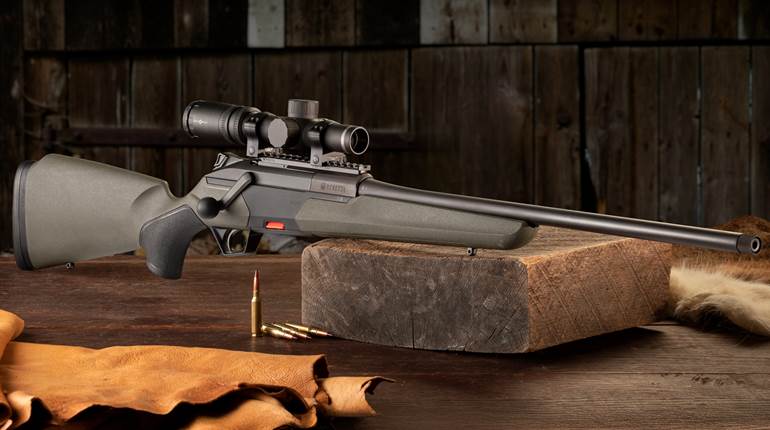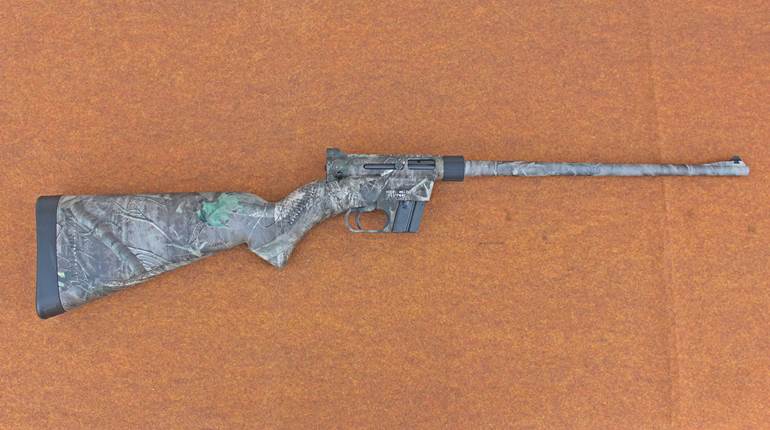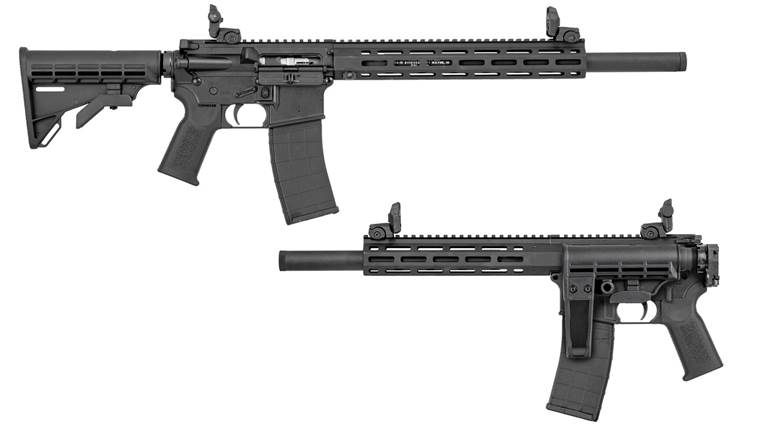
Some may only be familiar with the company’s lines of muzzleloaders, but CVA is developing into a noteworthy force within the American firearm industry on the rifle side as well. The Cascade bolt-action, introduced in 2019, is a prime example of CVA’s continuing focus on product expansion. Chambered in a total of 10 cartridges, each offered with either a charcoal gray or Veil Wideland camouflage-finished synthetic stock, our test sample for this evaluation was a camouflaged 6.5 mm Creedmoor.

In designing the Cascade, company engineers wanted to build the industry’s best bolt-action hunting rifle in what many label the “affordable class”—around $600. As such, as many features as possible that the manufacturer believed hunters would appreciate were incorporated into the Cascade, while still keeping the price within reach of most shooters.
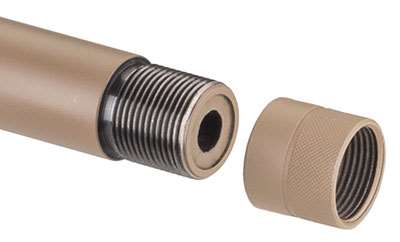
Overall length of the Cascade is 42", with a free-floated, slim-profile, 22" Bergara barrel, keeping the weight down to 6 lbs., 11 ozs. The rifle’s 4140 steel receiver houses a one-piece, three-lug bolt. This bolt pattern is often associated with entry-level bolt-actions, however, it can be quite conducive to accuracy.
One advantage of the three-lug bolt is a short, 70-degree throw, allowing for more scope clearance and less rotation/friction needed to unlock it from the chamber during manipulation. The Cascade’s drilled and tapped receiver is compatible with all mounts designed for Savage’s AccuTrigger-equipped Model 110s—making the installation of a scope atop the rifle a simple affair, as ring/base options are plentiful.
The rifle’s barrel is also made of 4140 carbon steel, Cerakoted Flat Dark Earth on our test gun, but blued on the gray base model. Suppressors and muzzle brakes are gaining in popularity, and the Cascade’s barrel is threaded 5/8x24 TPI to allow for their use; a knurled thread protector is provided for when a muzzle device is not being used.
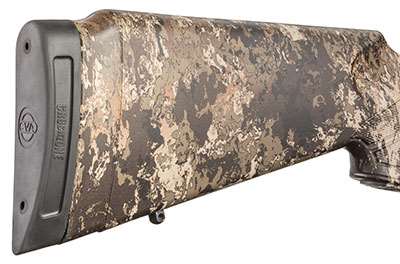
The fiberglass-reinforced synthetic stock bears what CVA calls its SoftTouch finish, giving the rifle a comfortable rubberized feel, and making it easy to hold onto even in wet conditions. Its stock also features an integral bedding block and free-floated fore-end that help contribute to repeatable accuracy.
An extra swivel stud was added to the fore-end so that a bipod can be affixed to the rifle without precluding the use of a sling. Length of pull (LOP) as the gun ships from the factory measures 13.75", but this figure is adjustable via removal of a 1" spacer sandwiched between the stock and a 7/8" Crushzone recoil pad. The stock spacer makes the Cascade a good choice for young hunters—allowing the rifle to adapt to the shooter’s frame as it changes.
A two-position safety is mounted on the right side of the action behind the bolt handle. The bolt can be cycled with the safety engaged, which is a benefit to the safe loading and unloading of the rifle. A lever on the left, rear of the receiver allows the bolt to be removed without the need to pull the trigger.
The Cascade cocks upon opening, a red cocking indicator extending rearward from the back of the bolt to signal that the rifle is ready to fire. Flush-fit with the bottom of the stock, a four-round detachable box magazine comes with the gun, and a spring-loaded magazine release lever forcibly ejects it when activated.
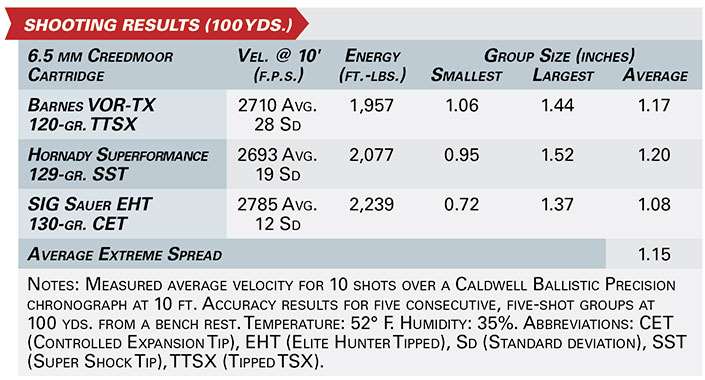
Our testing determined the CVA Cascade to be a highly accurate firearm, particularly relative to its price point. The company offers an “MOA capable” accuracy guarantee, and a huge factor in this is the quality of its trigger. A rifle’s trigger is the interface between the shooter and the firearm, and the trigger on our sample Cascade was crisp and free of creep, while being fully adjustable from 2 to 4 lbs.
According to a trigger pull gauge, our rifle’s trigger came from the factory set for a 3-lb. break, but we found adjusting the unit to be a fairly straightforward and simple process. Doing so requires the use of a 5/32" (4 mm) hex wrench to remove the two stock retaining screws from the trigger guard assembly, which allows the barreled receiver to be separated from the stock and provides access to the adjustment screw.
Turning the screw clockwise increases the trigger’s pull weight, and turning it counterclockwise reduces it. In such a case, making small adjustments and testing frequently, preferably with a trigger pull gauge, is advised. Once the desired weight is reached, it’s also a good idea to operate the bolt vigorously and check for any failures.
For testing, we felt it was appropriate to mount a reasonably priced but high-performing hunting optic on the Cascade, and a Leupold VX-Freedom 3-9X 40 mm was selected for this task. The Cascade performed well with each type of ammunition tested: 120-gr. Barnes VOR-TX, 129-gr. Hornady SST and 130-gr. SIG Sauer Elite Hunter Tipped.
Our stringent protocol of five, five-shot groups is likely the reason it couldn’t quite achieve m.o.a. accuracy with each of the test loads. Nevertheless, it performed well for a $650 gun, with two groups measuring less than 1".
The CVA Cascade may indeed be an entry-level rifle, but that in no way means it’s basic. Given its feature set and accuracy potential, particularly in light of its price tag, the rifle is a capable firearm that will leave hunters with more funds left in the budget to spend on optics, ammunition and other gear.













